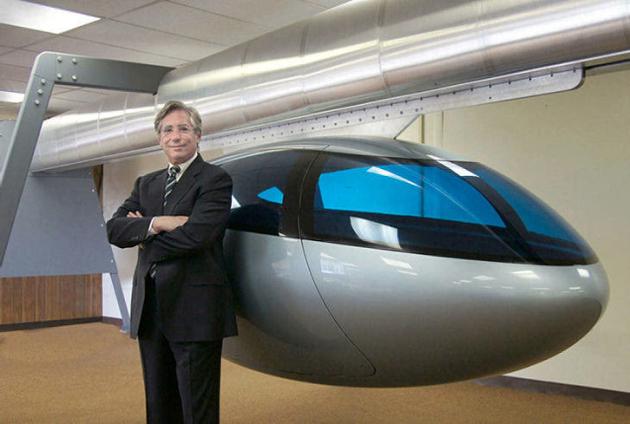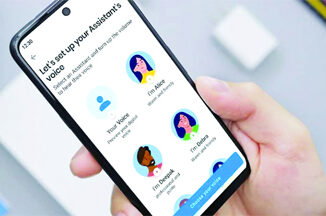
NEW YORK (TIP): The idea came to Jorge Odon as he slept. Somehow, he said, his unconscious made the leap from a YouTube video he had just seen on extracting a lost cork from a wine bottle to the realization that the same parlor trick could save a baby stuck in the birth canal. Odon, 59, an Argentine car mechanic, built his first prototype in his kitchen, using a glass jar for a womb, his daughter’s doll for the trapped baby, and a fabric bag and sleeve sewn by his wife as his lifesaving device.
Unlikely as it seems, the idea that took shape on his counter has won the enthusiastic endorsement of the World Health Organization and major donors, and an American medical technology company has just licensed it for production. With the Odon Device, an attendant slips a plastic bag inside a lubricated plastic sleeve around the head, inflates it to grip the head and pulls the bag until the baby emerges. Doctors say it has enormous potential to save babies in poor countries, and perhaps to reduce cesarean section births in rich ones. “This is very exciting,” said Dr Mario Merialdi, the WHO’s chief coordinator for improving maternal and perinatal health and an early champion of the Odon Device.
“This critical moment of life is one in which there’s been very little advancement for years.” About 10% of the 137 million births worldwide each year have potentially serious complications, Dr Merialdi said. About 5.6 million babies are stillborn or die quickly, and about 260,000 women die in childbirth. Obstructed labor, which can occur when a baby’s head is too large or an exhausted mother’s contractions stop, is a major factor. In wealthy countries, fetal distress results in a rush to the operating room.
In poor, rural clinics, Dr Merialdi said, “if the baby doesn’t come out, the woman is on her own.” The current options in those cases are forceps — large, rounded pliers — or suction cups attached to the baby’s scalp. In untrained hands, either can cause hemorrhages, crush the baby’s head or twist its spine. Although more testing is planned on the Odon Device, doctors said it appeared to be safe for midwives with minimal training to use. Along the way, it has won research grants from the United States Agency for International Development and from Grand Challenges Canada. “We’ve given out $32 million for 61 different innovations, and this one is the farthest along,” said Dr Peter A. Singer, the chief executive of Grand Challenges Canada.
The device will be manufactured by Becton, Dickinson and Company, or BD, of Franklin Lakes, N.J., which is better known for making syringes. “My first reaction, as soon as I saw it, was positive,” said Gary M. Cohen, the company’s executive vice president for global health. It was at the World Economic Forum in Davos, Switzerland, that Dr Merialdi asked him to consider taking it on. “Many inventions get to the prototype stage, but that’s maybe 15% of what needs to be done,” Cohen said. “There’s finalizing the design for manufacture, quality control, the regulatory work and clinical studies.
Absent that, they don’t see the light of day.” So far, the device has been safety-tested only on 30 Argentine women, all of whom were in hospitals, had given birth before and were in normal labor. “I was glad they asked me, because it was for a good cause,” said Luciana Valle, a kindergarten teacher who was 31 two years ago when her son, Matteo, was one of the first babies extracted with the device. Because Matteo weighed almost nine pounds, “it really helped,” she said in a telephone interview. “His head came out on my second push.” The WHO will now oversee tests on 100 more women in normal labor in China, India and South Africa, and then on 170 women in obstructed labor. In a telephone interview from Argentina, Odon described the origins of his idea.
He tinkers at his garage, but his previous inventions were car parts. Seven years ago, he said, employees were imitating a video showing that a cork pushed into an empty bottle can be retrieved by inserting a plastic grocery bag, blowing until it surrounds the cork, and drawing it out. That night, he won a dinner bet on it. At 4am, he woke his wife and told her the idea that had just come to him. (His own children were born without problems, he said, but he has an aunt who suffered nerve damage from birth.) His wife, he recalled, “said I was crazy and went back to sleep.” The next morning, a somewhat skeptical friend introduced him to an obstetrician. “You can imagine these two guys in suits in a waiting room full of pregnant ladies,” he said.
The doctor was encouraging, so he kept working. Polyethylene replaced the bag his wife had sewn, and the jar was replaced by a plastic uterus. With the help of a cousin, Odon met the chief of obstetrics at a major hospital in Buenos Aires. The chief had a friend at the WHO, who knew Dr Merialdi, who, at a 2008 medical conference in Argentina, granted Odon 10 minutes during a coffee break.





Be the first to comment